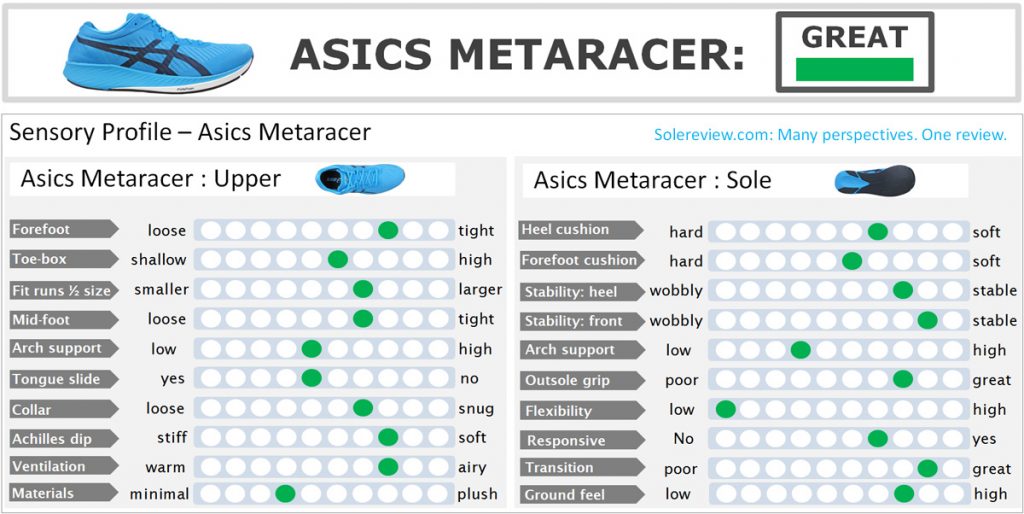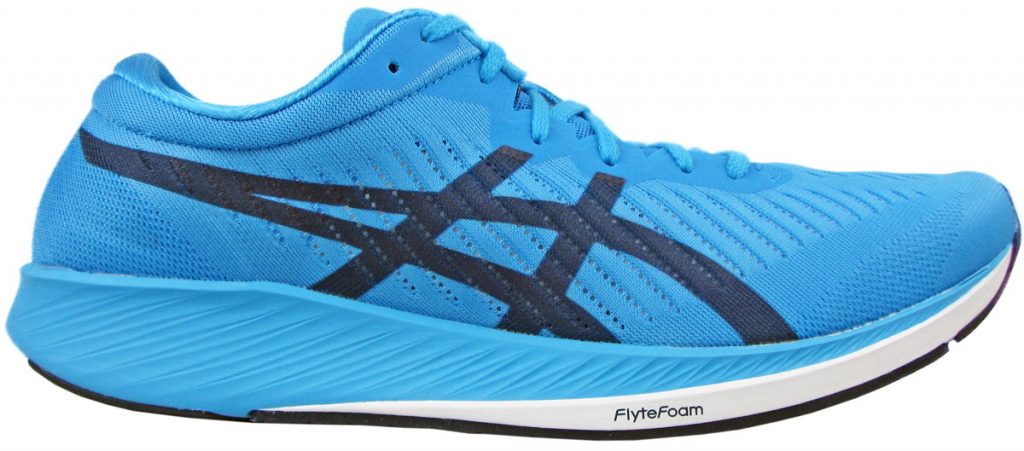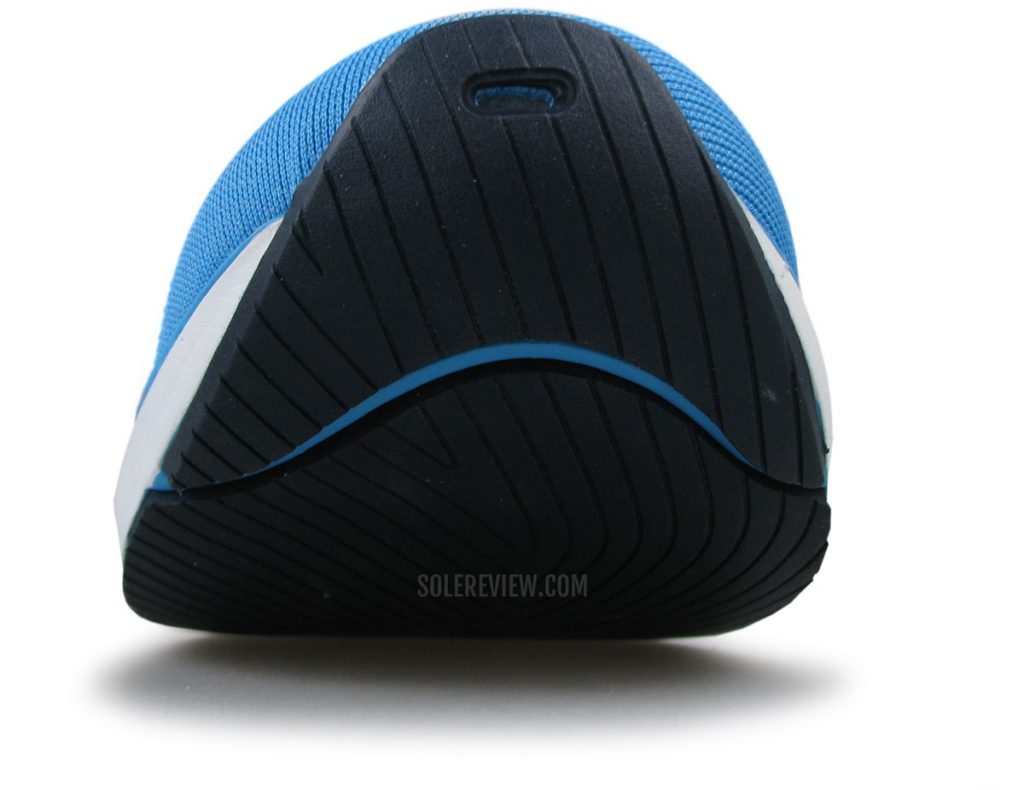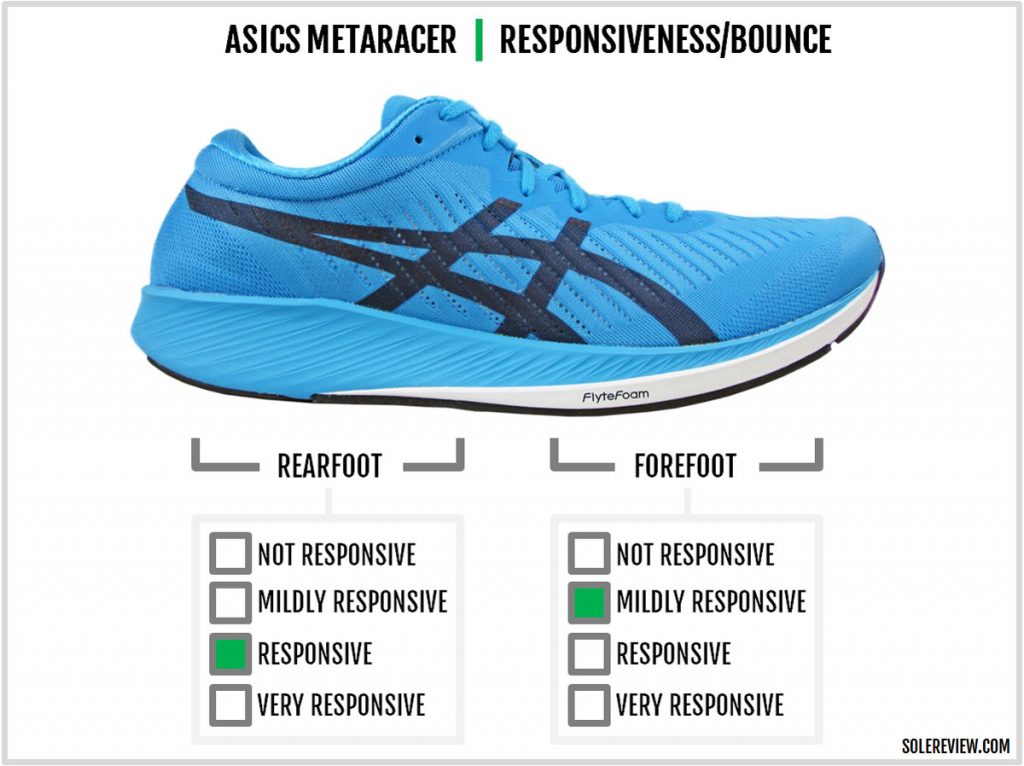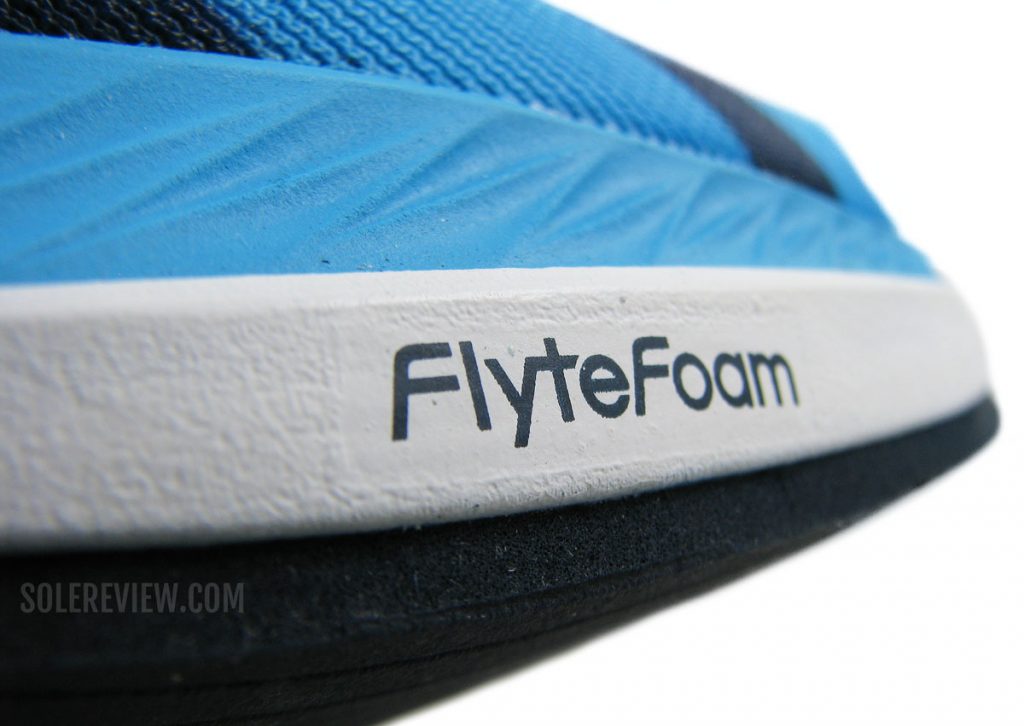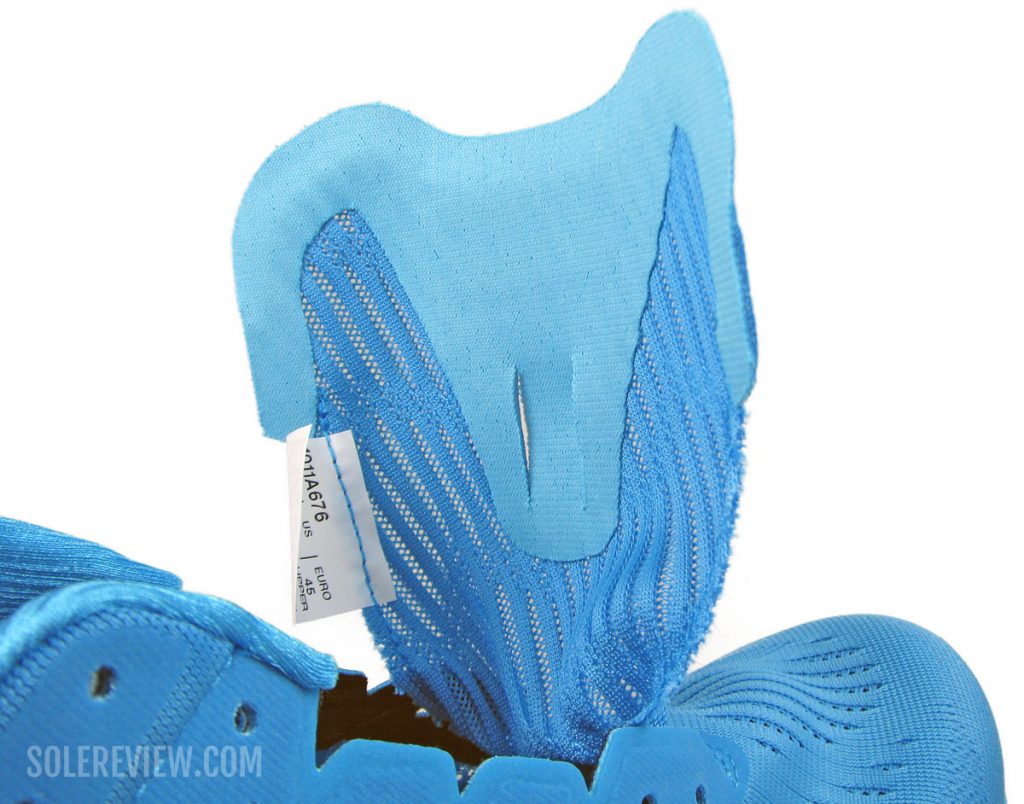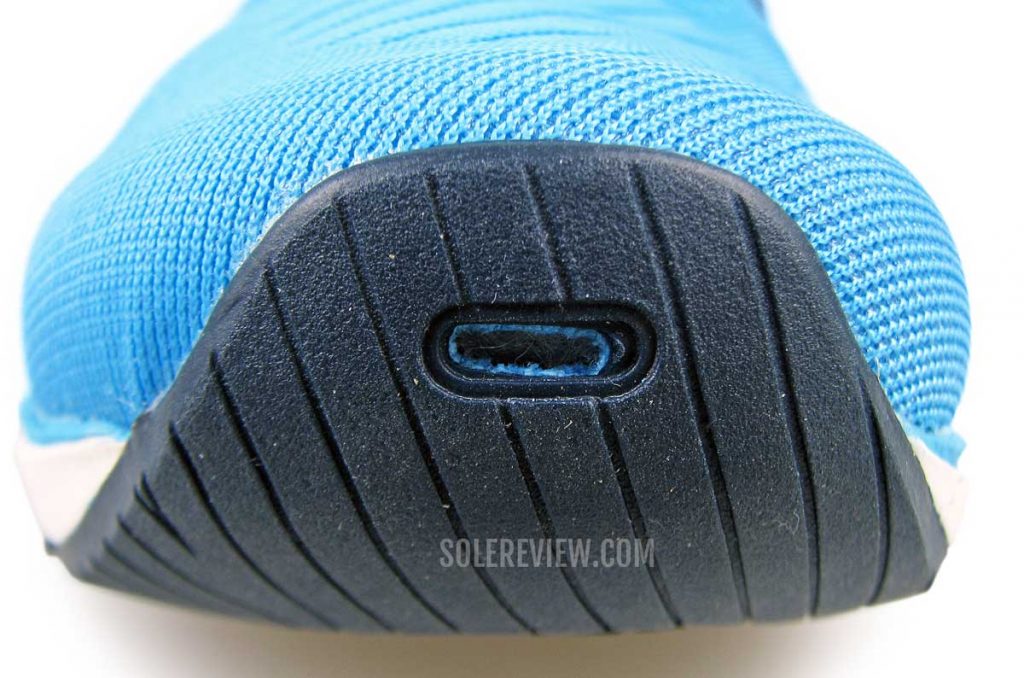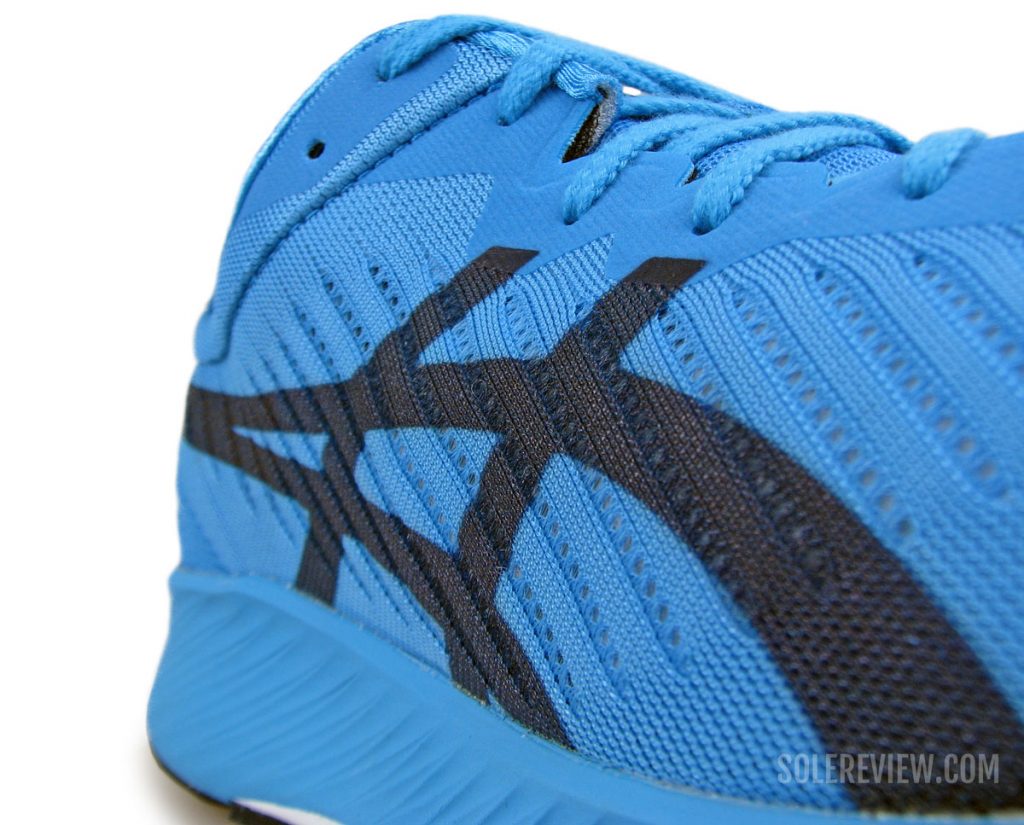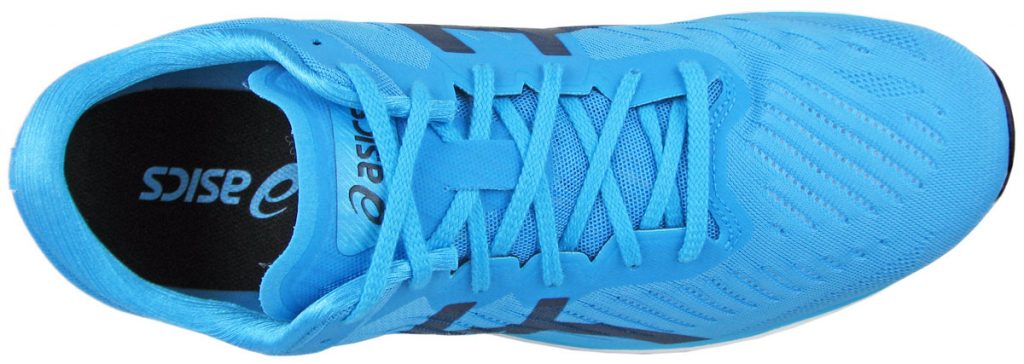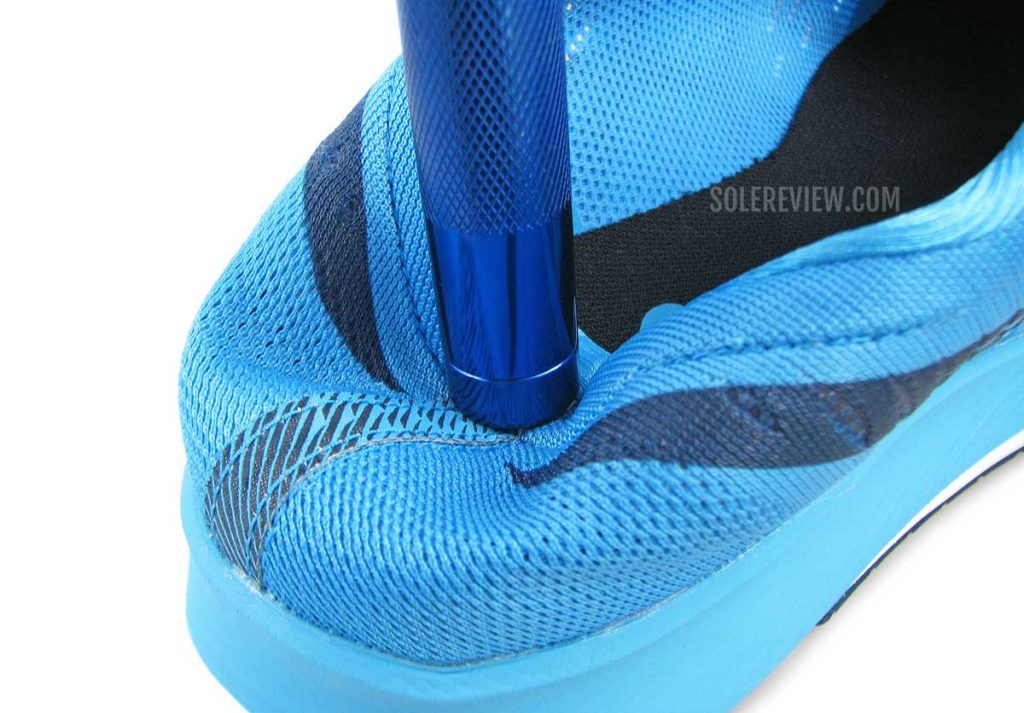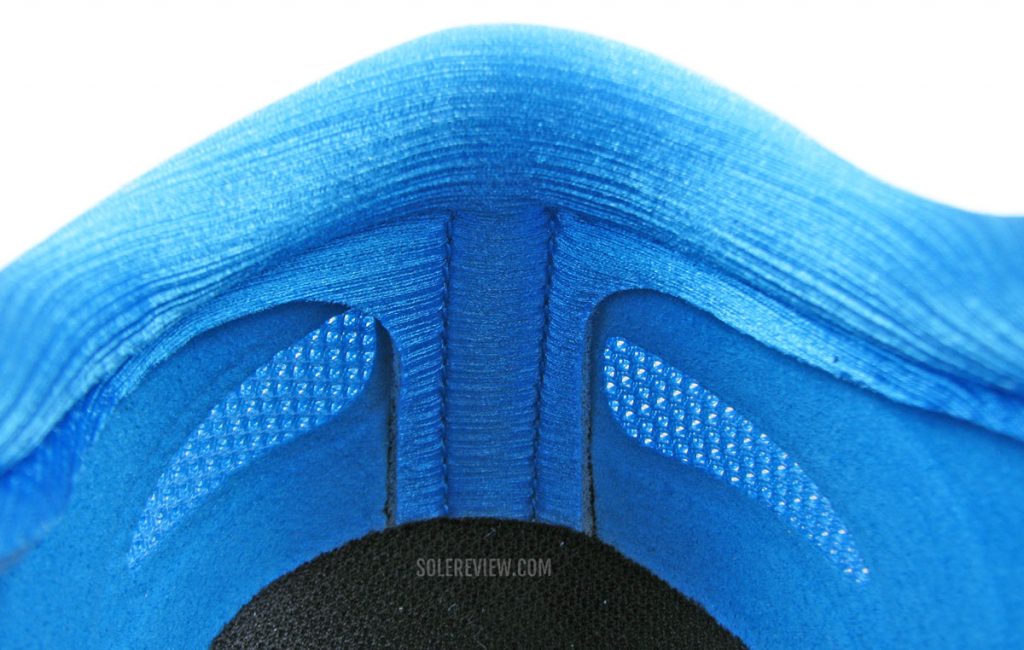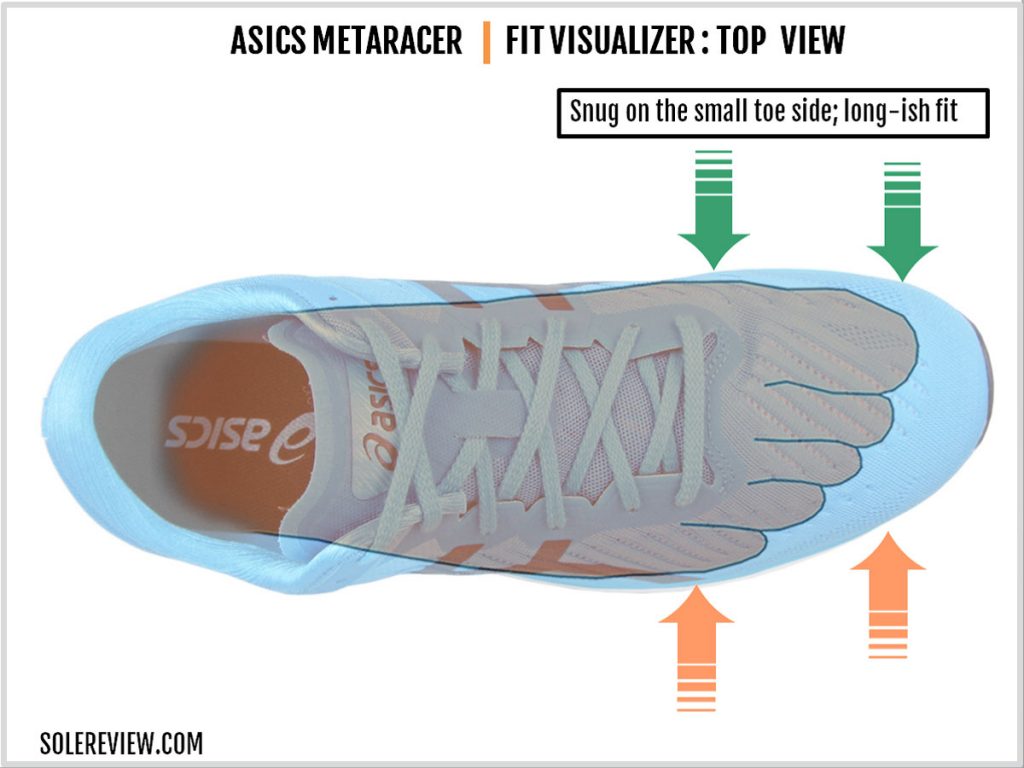INTRODUCTION
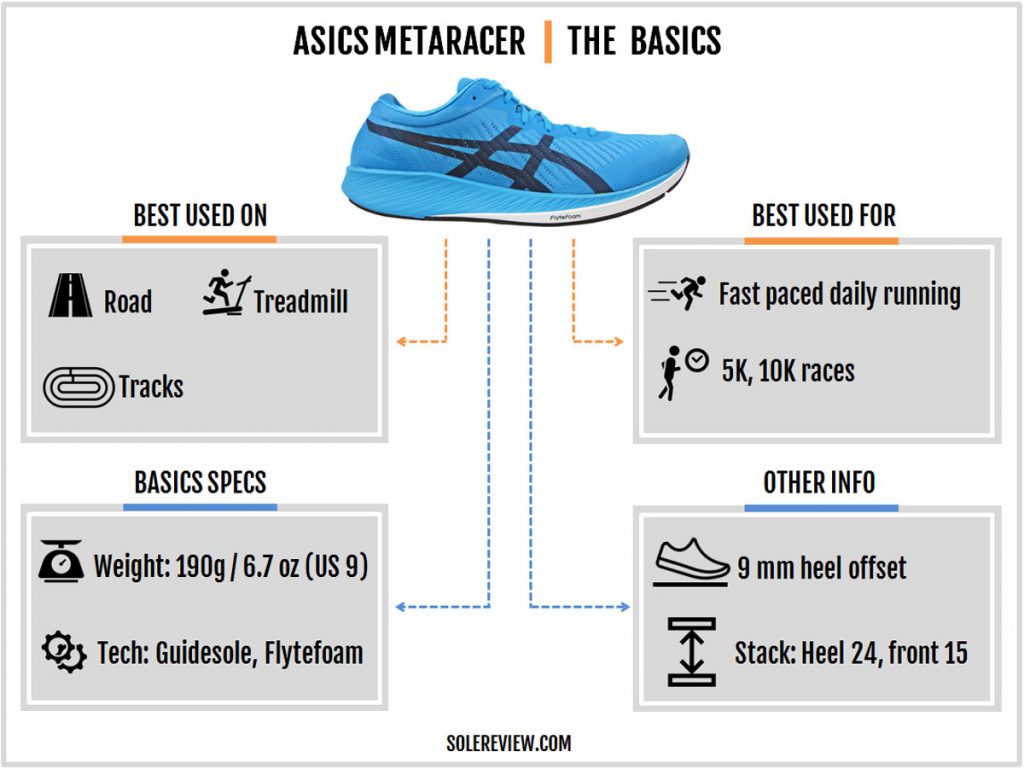
The Metaracer doesn’t feel like a plated shoe at all. And that’s the best compliment to give to a running shoe that has a Carbon plate inside its midsole.
In most running shoes with a stiff plate, one can feel the inner workings of the plate. Sure, some do it better than others but the Asics Metaracer’s sensory camouflage is the best we’ve come across.
It’s worth mentioning that Asics manages to achieve this distinction with a soft and low-profile midsole. It’s easy to camouflage a stiff plate inside a thick and firm midsole where the foam hardness does a good job of masking the plate’s behavior.
That isn’t the case here, and it’s a testament to Asics’s clever design. This is a road racer with low stack heights, so concealing the plate is a more difficult task.
Asics also succeeds in creating a new niche with the Metaracer. Ever since Nike released the Vaporfly, most running shoes that have incorporated a plate have relied on a thick midsole to do so.
The Metaracer adopts a different approach and plonks a Carbon plate into a low-profile racer. One could argue the New Balance RC Elite does something similar, but the Metaracer is differentiated enough.
It’s clear to see that our days of Asics-bashing are behind us.
The spirit of the ‘new Asics’ is evident not only in products such as the Metaracer and Glideride but also in legacy franchises like the Nimbus and Kayano. The Metaspeed Sky also sounds intriguing.
Keeping doing whatever it is you’re doing now, Asics. It’s working.
THE RIDE EXPERIENCE
At first glance, the Asics Metaracer looks like a shoe with a firm ride.
And why shouldn’t it be? The ‘racer’ part of the name suggests that this is a shoe designed with serious business in mind. Typically, road racers with a low-profile midsole are firmly-cushioned creatures meant to go fast.
But there are occasional exceptions to the rule; the Metaracer happens to be one of them.
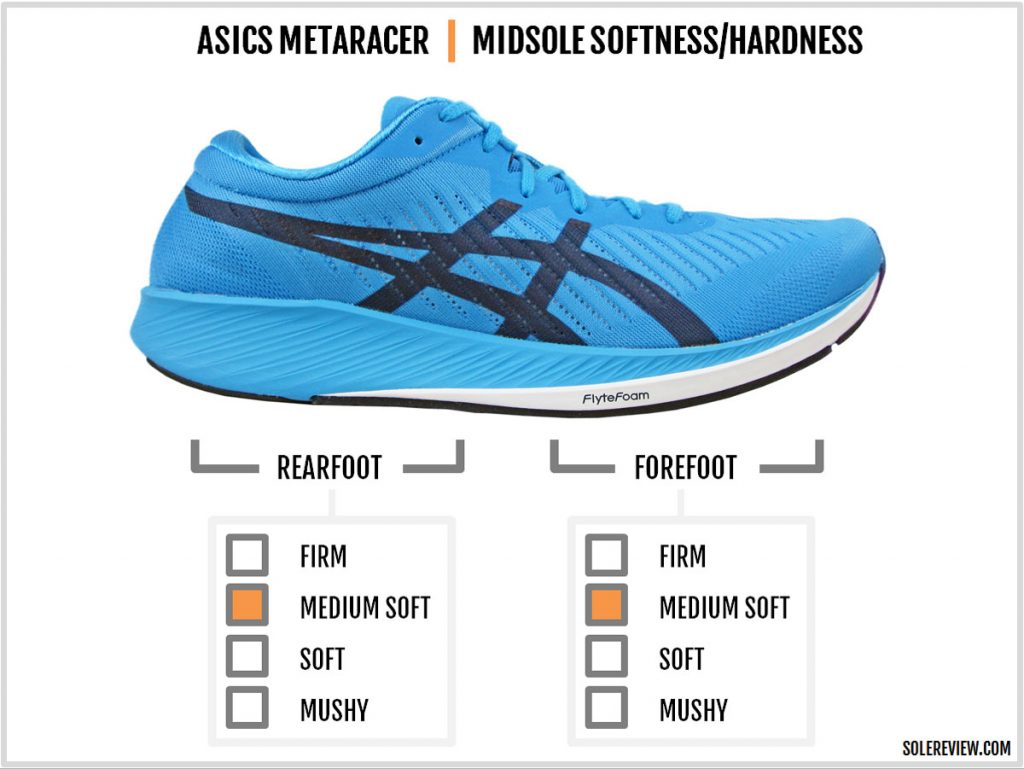
Two things come as initial surprises. The first is how soft the midsole is. Of course, we say that in a relative manner of speaking. The softness isn’t deep, but comes across as a cushy layer of softness just under the foot.
So if that’s the case, where’s the plate?
That brings us to the second surprise. One doesn’t feel the plate working inside the midsole. It does work, but from a sensory viewpoint, it feels as if the Metaracer is just a shoe with a stiff outsole and soft midsole over it.
We’d love to take the Metaracer apart to have a closer look at the plate mechanics, and we’ll probably do so at a later date. For now, we’ll take Asics’ claims at face value – that the plate is bottom-loaded.
And it does feel flush with the outsole. The outsole has an uncommon design as well. Instead of small lugs that are usually a part of racing shoe scenery, the Metaracer’s outsole looks like the tread of a semi-slick racing car or motorcycle tire.
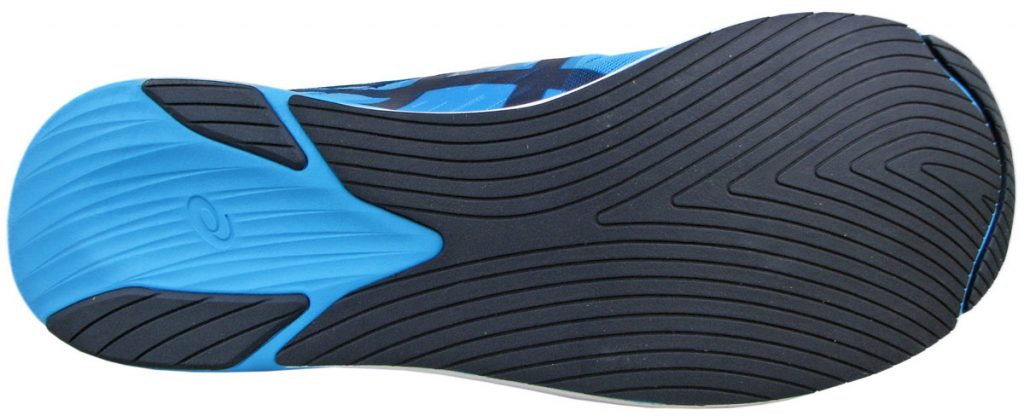
The unusual design delivers satisfactory traction due to Asics’ use of a sticky compound. The rear pieces are made of hard rubber whereas most of the outsole is soft blown rubber.
Asics advertises this outsole as ‘Asics grip’ and ‘Wet grip’ – meaning that the Metaracer uses a special rubber compound. On the road, the traction is very good despite the semi-slick tread. Most of the outsole is made of soft blown rubber, with only the two heel pieces being hard rubber.
It’s time for a little digression.
Broadly speaking, there are two categories of running shoes with plates. The first is the Nike Vaporfly kind – where a plate acts as a kind of ‘spring’ under the rearfoot. The Saucony Endorphin Pro/Speed and Brooks Hyperion Elite are somewhat similar too.
The Carbon plate also acts as a transition device because the stiff forefoot makes it easier – and might we add – quicker, to roll off.
The second group of plated runners focuses more on the transition aspect of ride delivery, with the ‘springboard’ effect being close to none. Examples would be models from Hoka One One, and yours truly – the Asics Metaracer. The Glideride does the same thing, albeit in a different form.
As with most plated running shoes, the Metaracer has an exaggerated toe-spring. The tip of the shoe is curved high to help with the roll-off phase, and it works as intended.
Here, the flat outsole surface and Carbon plate work together as one. During runs, the plate is virtually indistinguishable from the outsole.
All that one notices is a stiff, transition-friendly outsole topped with a cushy layer of Flytefoam. It’s almost as if the plate was flush with the outsole, and this composite enhances the ground feel and quick turnovers during the gait cycle.
Asics uses various types of Flytefoam, and to be honest, it’s all very confusing. There is no set standard for what the Flytefoam should feel like.
The earliest shoes with Flytefoam (Dynaflyte V1) had an ultra-stiff ride. Then we have shoes like the Novablast, and now the Metaracer. The newly-released Metaspeed Sky take it further with the ‘Flytefoam Blast Turbo’.
In contrast, competing shoe foams like the adidas Boost and Nike ZoomX are extremely consistent with their cushioning behavior.
So we review every Flytefoam-based running shoe as if it were based on a completely new midsole foam – that’s how scattered things are.
The Flytefoam used on the Metaracer feels great, as it should be for a $200 running shoe. It’s a cushy material with a Goldilocks level of softness; it’s neither too soft nor too firm.
It also manages to feel responsive without using the springboard effect as a crutch. That’s a feat for a low-profile racer with a 24 mm rear and 15 mm forefoot stack. It’s easy to make a shoe feel responsive with a thick midsole. In contrast, the Metaracer is constrained by a thinner midsole yet manages to deliver a resilient ride quality.
The ride comfort differentiates the Metaracer from traditional racers. In the sense that it feels padded enough to go up to a half-marathon distance, rather than being the 5-10 miler that most racers are.
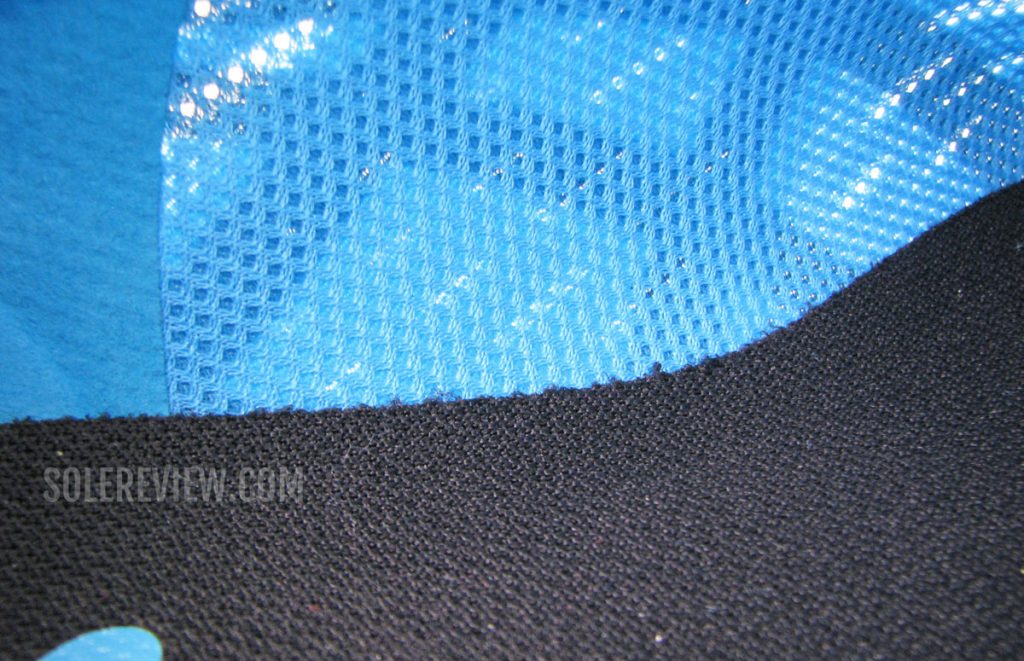
The insole (in black) is pasted to the midsole and is non-removable. This is typical of most racing shoes.
There’s not much in way of the insole; it’s glued tight over the lasting. So most of the ride softness is produced by the midsole.
The Metaracer excels at what it’s designed for. It’s best used for speed runs where the paces are quicker than the 7 min/mile, 4:30 min/km threshold. Asics has managed to keep the shoe under 7-ounces or 200 grams, and that’s always helpful in such use-cases.
It works on the road and treadmills equally well; on synthetic tracks, a more aggressive outsole lug geometry would have worked better.
It’s also a better fit for forefoot strikers than runners who land heel first. As we’ve said in our buyer’s guide for midfoot and forefoot strikers, not everything can be reduced to the heel drop. On paper, the Metaracer has a 9 mm heel-to-toe offset.
In reality, the midsole design makes the shoe less than ideal for rearfoot-strikers, or for that matter, slower runs.
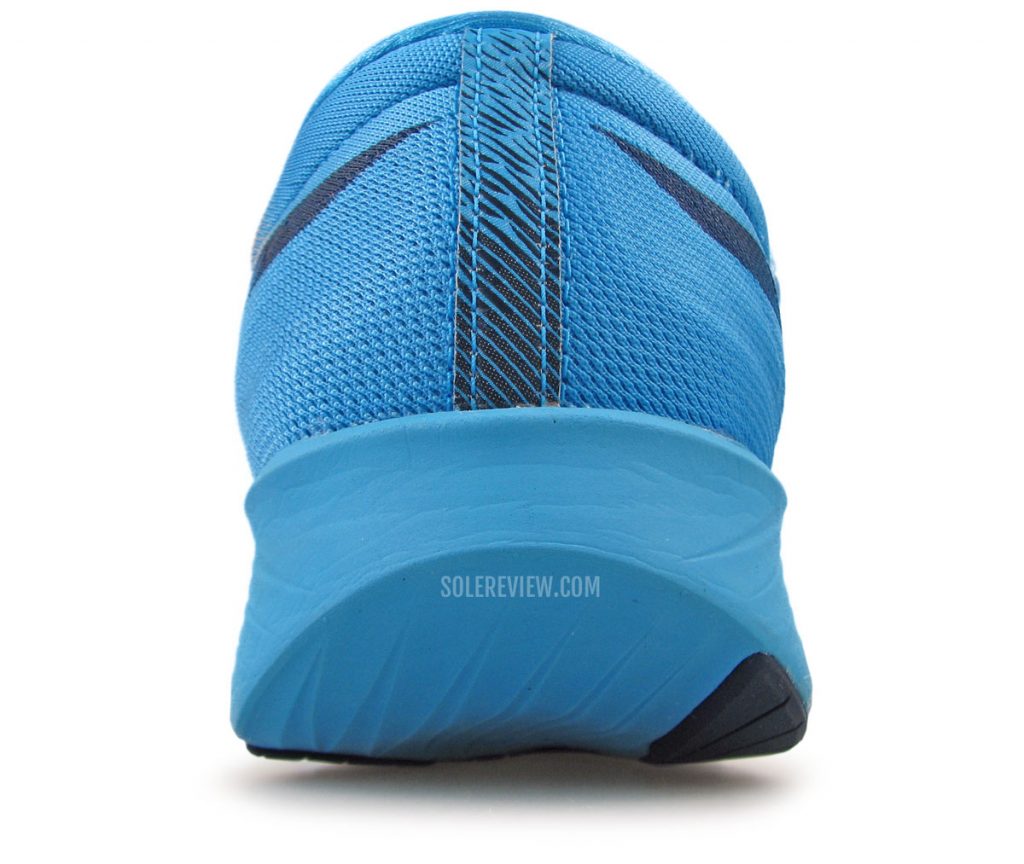
The Metaracer has a raised heel bevel. The lack of an internal counter and raised sidewall leads to a lower level of medial/inner support at the base of the heel.
The ride may be smooth due to the single-density foam (the white color is paint), bottom-loaded plate, and the heel bevel, but there’s a noticeable disconnect between the front and rear softness. The outsole design and the thicker heel is partly to blame.
Only the midfoot and forefoot are covered (entirely) with rubber. There’s exposed foam under the heel, and this also happens to be the thickest part. Thus, rear to front transitions occur with a momentary hesitation, as the foot loads from a softer heel to firmer forefoot.
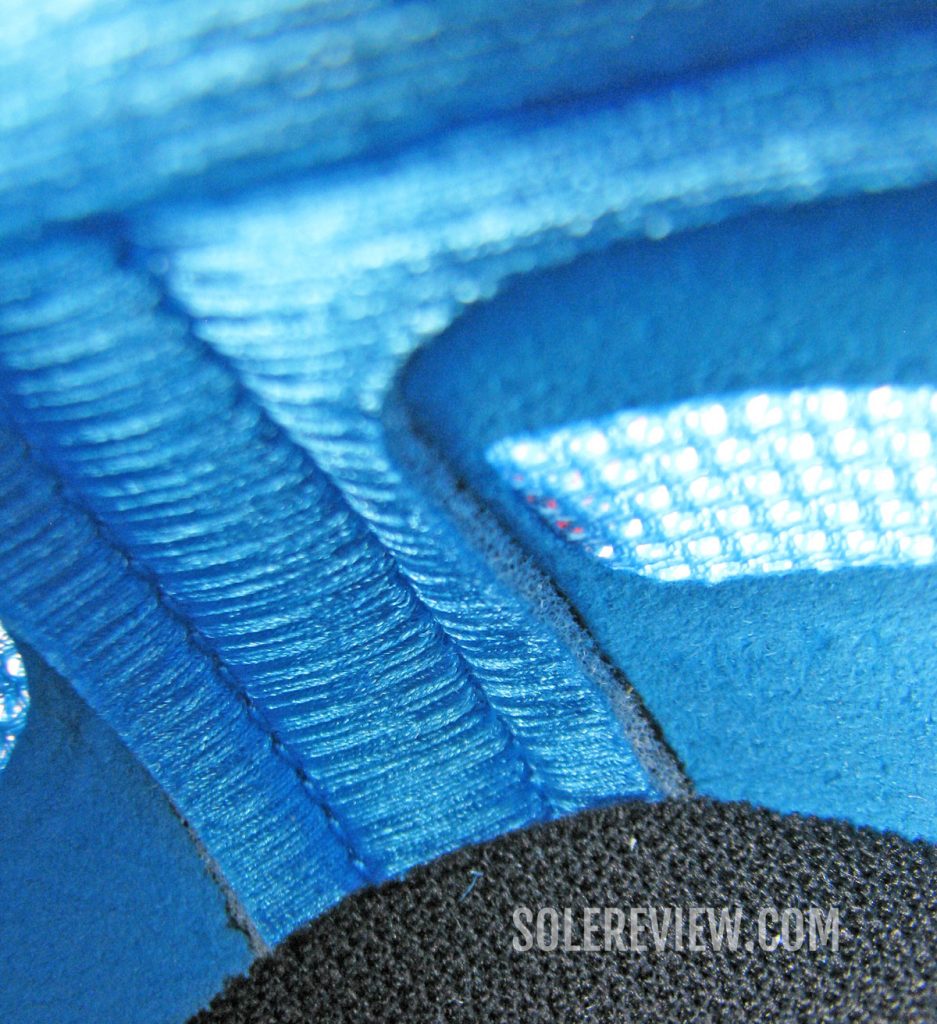
Breezy, see-thru windows indicate the lack of an opaque material, also known as the internal counter.
The other reason is the lack of heel stability. Though the midsole has a very balanced and neutral design, the upper lacks an internal heel counter. A collapsible heel isn’t a drawback on its own, but the foot also sits on top of the midsole rather than being cupped on the sides.
The midsole base is narrow and the sidewalls have a slight scoop that makes the foam softer and easier to compress. The lack of support is felt more towards the inner/medial side, as there’s nothing to arrest the natural inwards roll of the foot.
To cut a long tale short, the base of the heel doesn’t lock the foot in as well as it should. To compensate for a counter-less upper, Asics should have raised the midsole sidewalls to cup the heel. The much cheaper Hyper Speed has a similar heel design, but that shoe delivers better stability by using a stiff heel counter and firmer midsole.
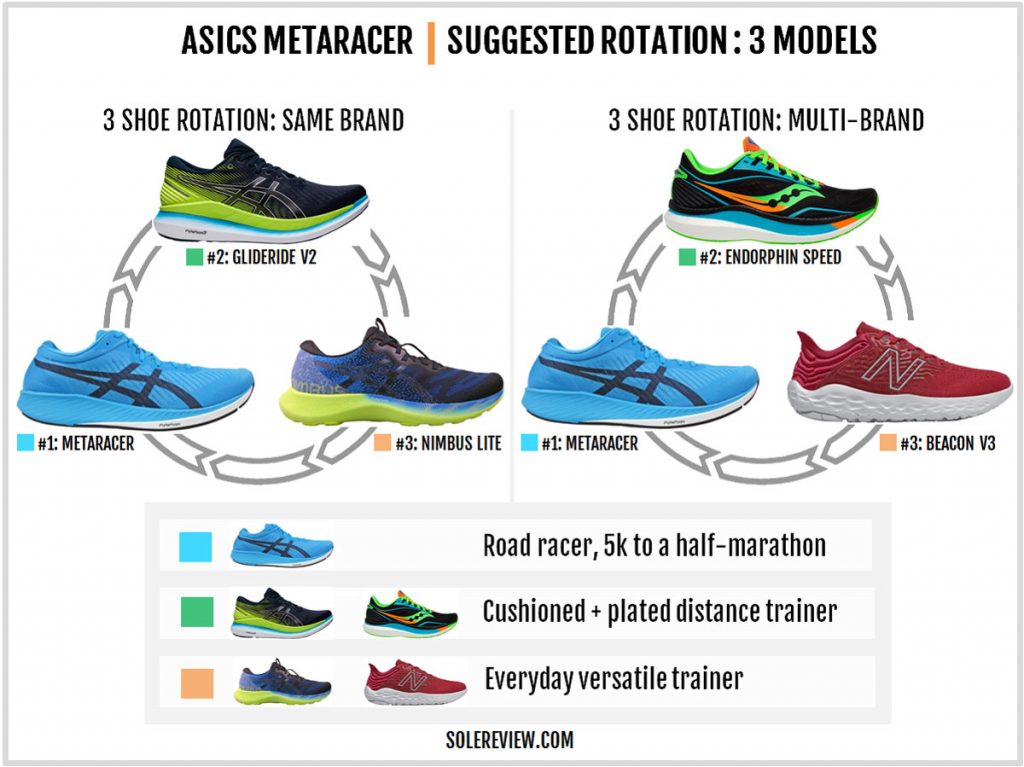
The Metaracer is great for races and speed runs of up to half-marathons, so we have a few pathways to an optimal shoe rotation. The first would be to stick to just two shoes.
For example, either the Glideride or Nimbus Lite 2 could serve as a versatile trainer that’s good for daily and/or long-distance runs. Of course, there’s no one stopping you from getting both.
One could do the same with the Saucony Endorphin Speed and New Balance Beacon V3 – or New Balance Fuelcell Prism.
Of course, while both the shoes – namely the Endorphin Speed and Asics GlideRide 2 – are very different products, their plated midsole is a more engaging experience than an all-foam design.
IS THE ASICS METARACER DURABLE?
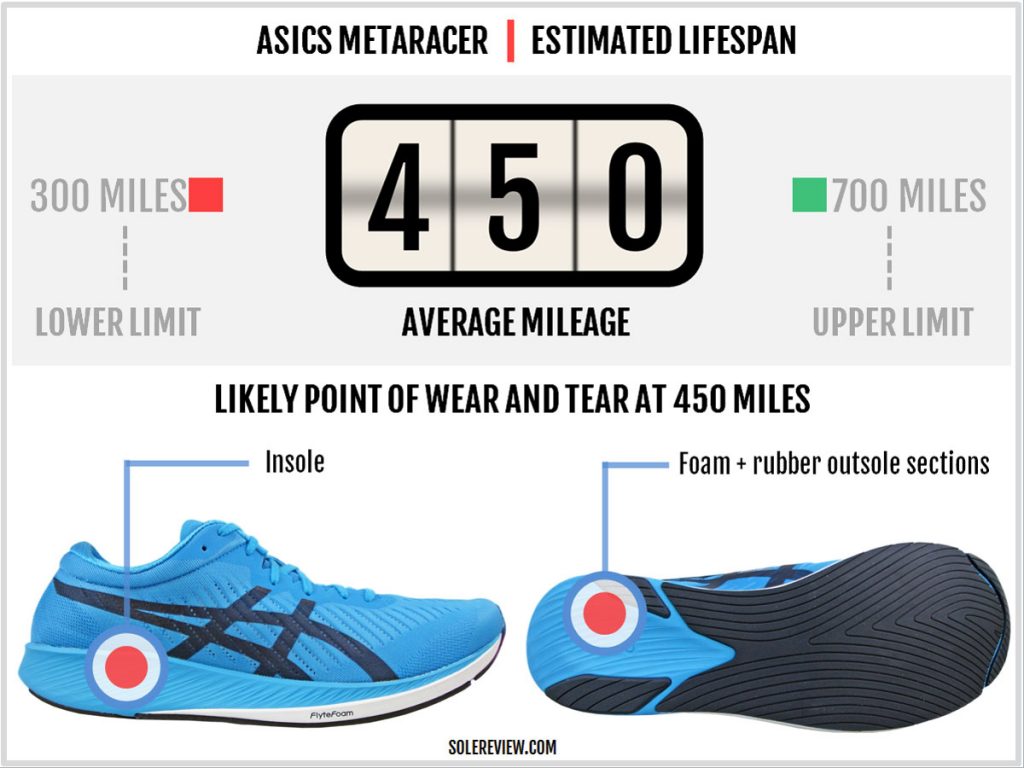
The flat outsole means that there are no lugs to catch on. Wear and tear happens very gradually on the outsole, and no midsole creasing has happened so far.
We’d give this shoe an estimate of 450 miles. The upper, while minimal, doesn’t look flimsy either.
THE UPPER DESIGN AND FIT
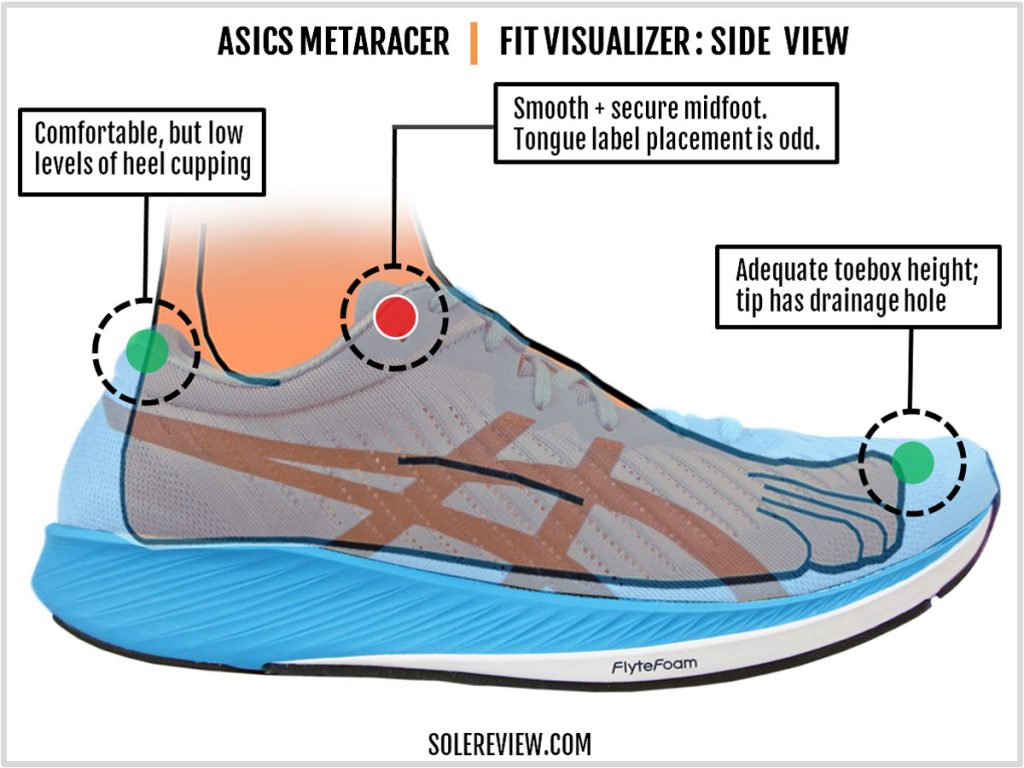
If you decide to bring a pair of Metaracer home, a certain task must be performed on the shoe before taking it out for its first spin.
Take a pair of kitchen scissors and snip the oddly-placed tongue label.
There are so many questions. Why was the label placed here? Did the designer or developer imbibe fine Japanese Sake during the creation of this shoe? Or did Asics have an internal competition to see who could think of the silliest place to stick a sizing label?
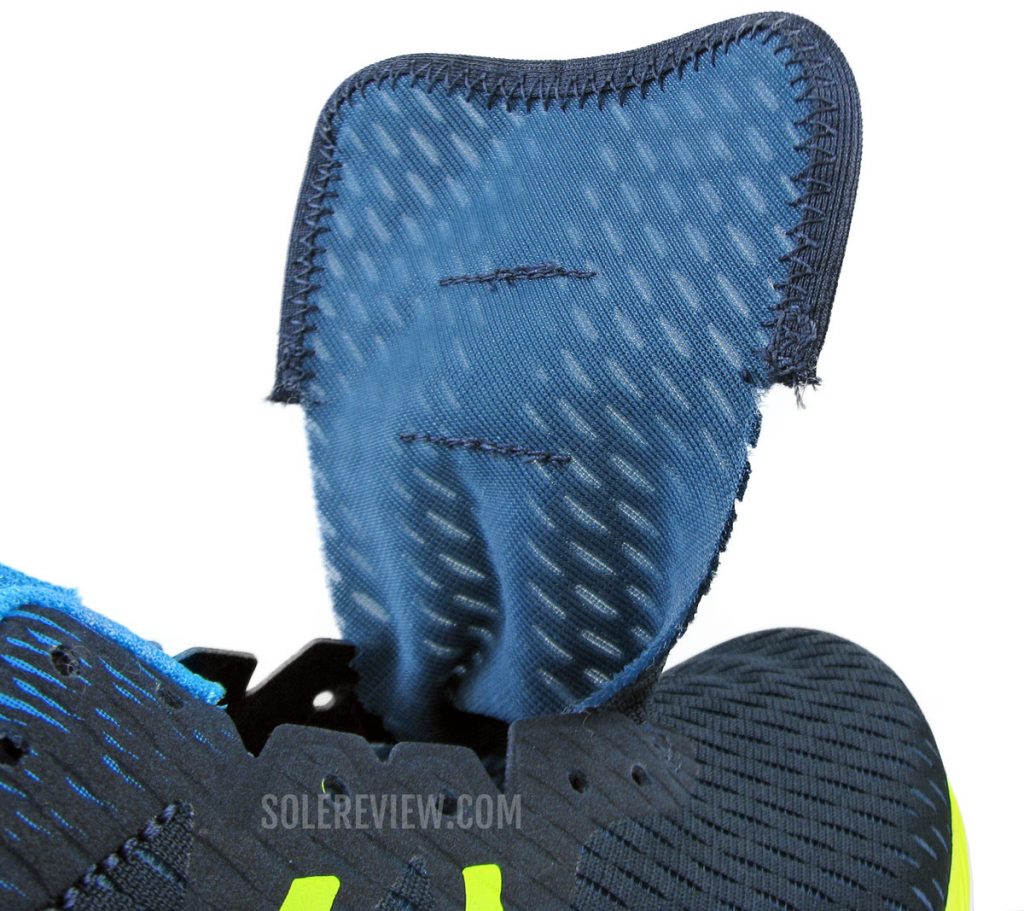
Pictured here is the tongue of the $90 Asics Hyper Speed. Note that the offending tongue label is nowhere to be seen.
The offending label tends to fold under the tongue and pull the edges under. Undoing it requires sticking a finger under the tongue and freeing the label.
If the $80 Hyper Speed (see picture above) can do this properly, why not the Metaracer?
Else, the Metaracer’s upper is comfortable with plenty of air circulation. The tip of the shoe even has a drainage port to let the water out – and in.
One of our test runs took the Metaracer through a rained-on track, and the water got inside within the first kilometer. So the water flows both ways.
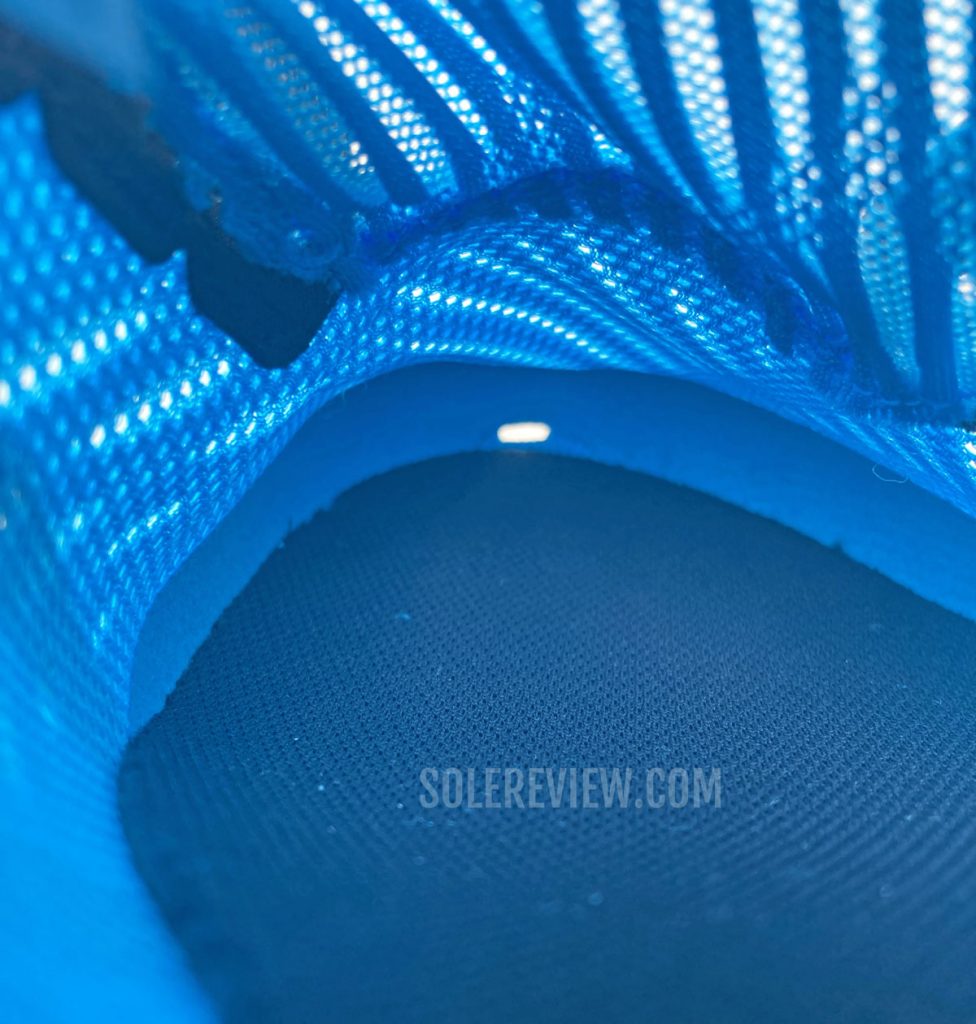
The toe-box and forefoot are very breathable. The mesh is generously vented, and the drainage hole lets the air in.
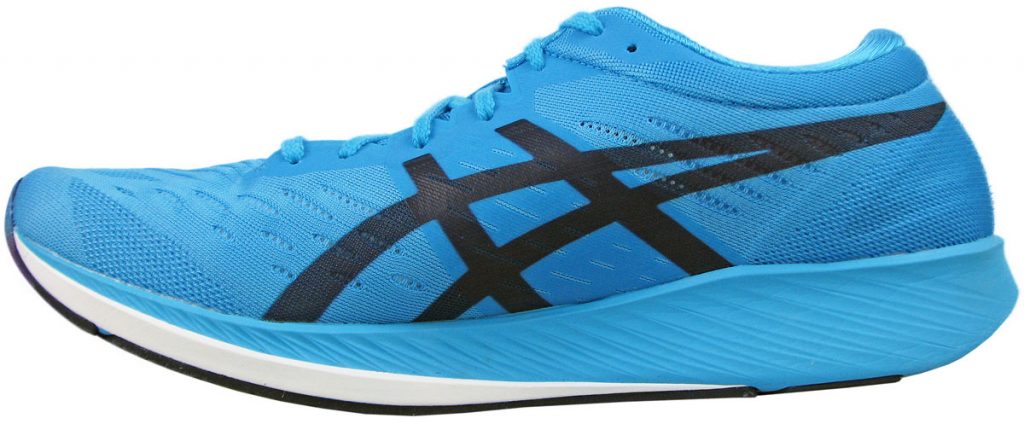
The midsole is single-density. The white portion is mere paint. The medial upper has a filmic overlay for support.
There’s ventilation everywhere, and that makes the Metaracer a summer-friendly running shoe. The forefoot has vents, the midfoot is breezy (the arch side has a filmic overlay), and the thin tongue also keeps the feet cool. There’s no gusset so the tongue slides to one side as expected.
Even the collapsible heel has mesh windows to let the air in and out. The collar is soft and grips the top of the heel well. The base of the heel is unstructured, and therefore, feels unsupported.
One feels the empty space between the upper and heel only at the base, and not near the top. It’s not a deal-breaker, but rather a subtle reminder that the Metaracer’s heel fit is a work in progress.
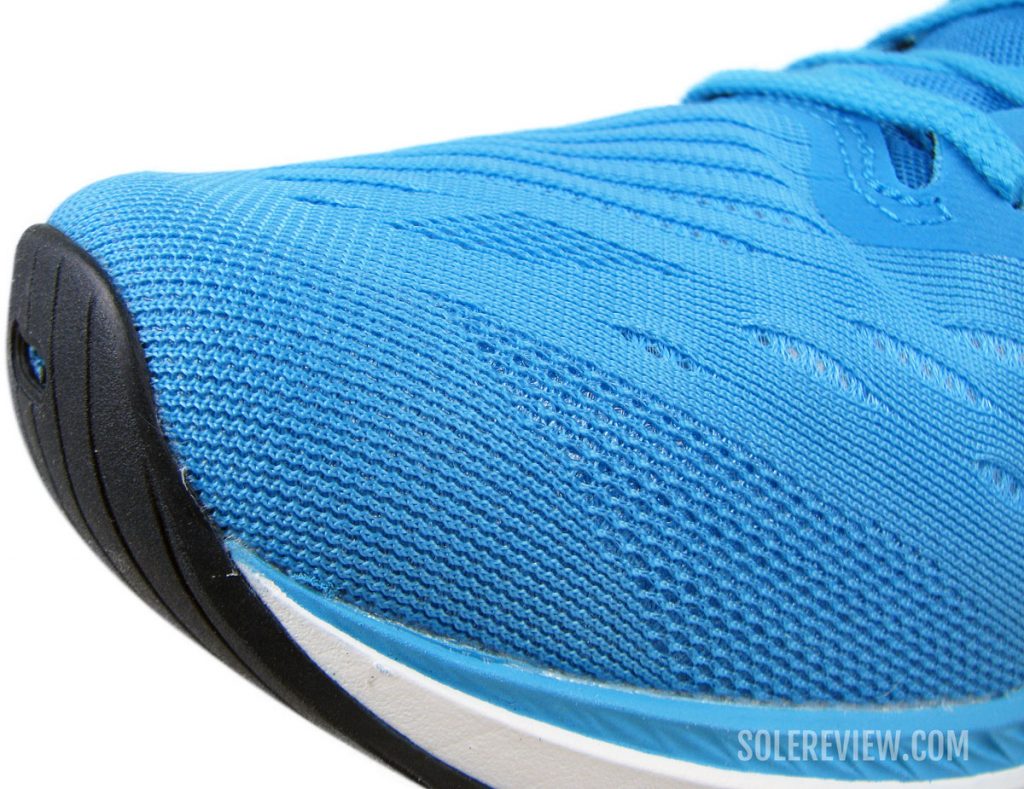
The toe-box is quite roomy; the forefoot is snug. For a road racer, the interiors feel relatively accommodating.
Fit-wise, the Metaracer runs true to size, although slightly long. While the toe-box is broad, the forefoot is snug on the sides – with the small toe getting special attention.
The longish fit is a pattern we’ve noticed with Asics of late. As with most road racers, there are no widths.
PROS AND CONS
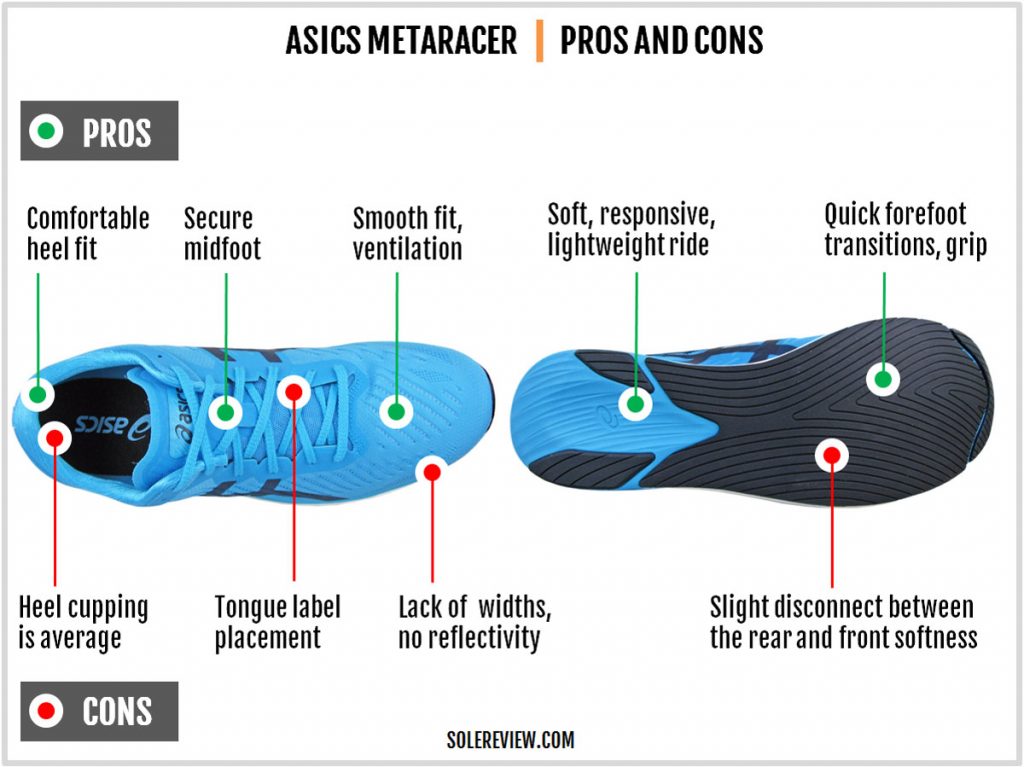
As a whole, the Metaracer is a unique racing shoe that makes runs enjoyable and comfortable. Its plate integration is the best we’ve seen; the Carbon plate blends so well into the midsole that’s it hard to tell the components apart.
The ride is smooth, quick, and sufficiently cushioned for slightly longer distances. The outsole grips surprisingly well too. On the upper, only the heel fit and tongue label are areas that require improvements.
The lack of widths and reflectivity would also be considered as minor feature gaps.
THE ASICS METARACER vs. HYPER SPEED
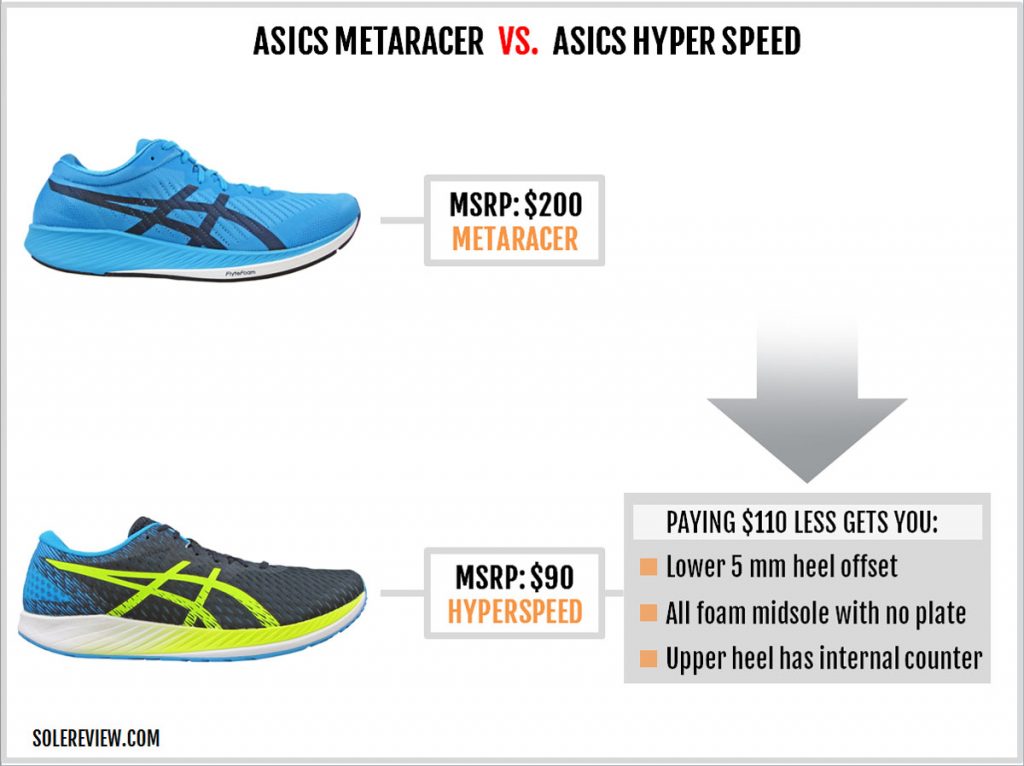
Usually, there’s a huge functional and value gap between shoes that are separated by a price difference of $120.
But when the sub-$100 Hyper Speed is compared with the Metaracer, it’s not all that black and white.
The Hyper Speed is a re-boot of the namesake series. It has evolved from a traditional racing flat silhouette to one that borrows its design lines from the Metaracer. In short, it looks like a less expensive version of the Metaracer.
It’s not just about the appearance; the Hyper Speed makes a compelling case for itself. It doesn’t have a plate, of course. Other than that, the Hyper S does everything that it’s supposed to do. It’s an excellent substitute speed shoe for the Metaracer, except that it has a price tag in double digits.
The midsole has a lower heel-to-toe offset of 5 mm and uses a regular rubber outsole with conventional lug geometry. As with the Metaracer, the midsole has a high toe spring along with a breezy upper.
And lest we forget – the Hyper Speed has an internal heel counter and a tongue label that’s stitched in the right place.
Do you own this shoe? Improve this review by sharing your insights – submit a review here.

